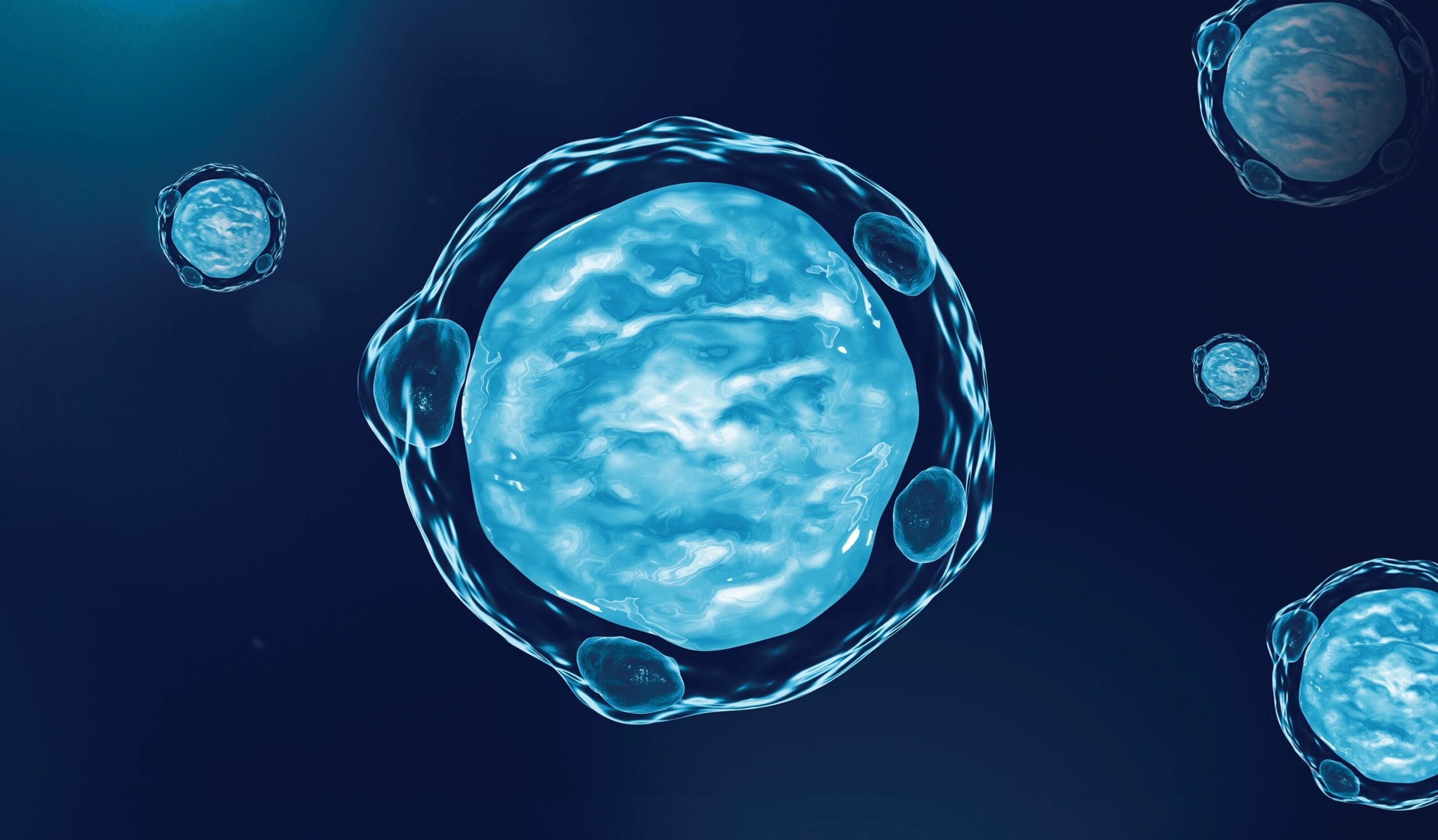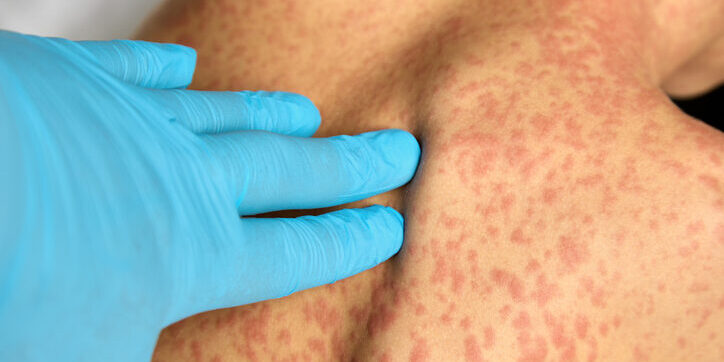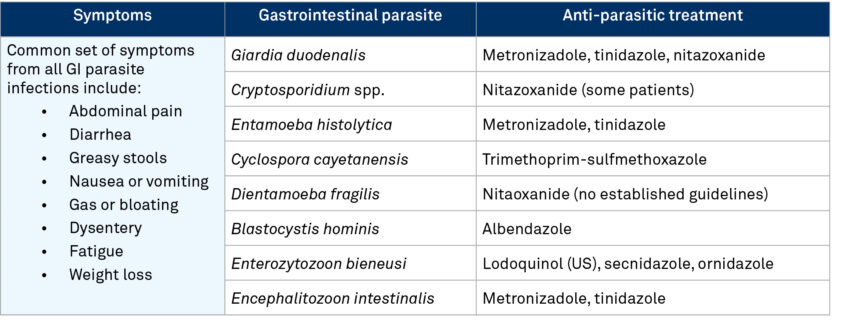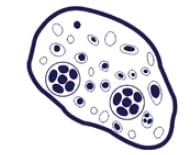Blastocystis hominis: symptoms, prevention and treatment

Blastocystis symptoms
General
Blastocystis hominis is one of the most common parasites found in the human intestine. Global incidence significantly varies in prevalence, ranging from 2% to over 80%, dependent on a range of factors including geographical location, proximity of livestock and pets, and immune function.
B. hominis is an anaerobic intestinal parasite that can infect through the fecal–oral route, primarily via contaminated water and food sources [1].
Blastocystis hominis in immunocompromised patients
A significantly higher proportion of immunocompromised patients have been found to have pathogenic B. hominis in their stool. This infection can lead to very severe symptoms, and even death, in immunocompromised patients [3].
It is particularly important to screen donor fecal microbiota transplantation samples, as donors infected with Blastocystis could significantly impact the health of an immunocompromised patient [4].
Many people with B. hominis in their stool report seeing no obvious symptoms, as the organism can be found in both well and unwell individuals. The most prevalent subtypes associated with gastrointestinal complaints include subtypes ST1, ST2, ST3 and ST4, which have been found in patients suffering from;
- Watery diarrhoea
- Abdominal pain
- Vomiting
- Weight loss/loss of appetite
- Bloating
- Excessive gas
- Fatigue
The presence and severity of these symptoms is variable and differs between individuals, varying from acute to chronic infections [2].
The benefits of employing molecular syndromic testing for overlapping gastrointestinal signs and symptoms
Genetic Signatures' EasyScreen Gastrointestinal Parasite Detection Kit can detect 8 parasite pathogens from a single sample, in a single test, increasing the likelihood of identifying co-infections from multiple parasites that might be missed with traditional testing methods. This is particularly important in cases where patients present with non-specific or overlapping symptoms that could be caused by a variety of gastrointestinal pathogens.
Blastocystis hominis role in irritable bowel syndrome
Blastocystis infections have been associated with the increased risk of developing irritable bowel syndrome (PBC) amongst more susceptible populations. Blastocystis pathogenesis is suggested by a number of studies to be attributed to the parasite's ability to attach to the intestinal mucosa, increase intestinal permeability by secreting cysteine proteases, degrade secretory immunoglobulin A (IgA), induce the secretion of inflammatory cytokines such as interleukin-8, and cause the apoptosis of host cells [5,6]. Low-grade inflammation due to ongoing immune activation caused by carriage or infection with Blastocystis, providing persistent antigenic exposure, could play a role in the development of IBS [7].
Blastocystis hominis and urticaria (skin rashes and hives)
Hives are red, itchy welts on the skin that are often accompanied by swelling. Recent studies have suggested that Blastocystis may be associated with dermatological symptoms such as acute or chronic urticaria, angioedema, rash, itch, palmoplantar, and diffuse pruritus, particularly for serotype ST3 [8,9].

Preventing Blastocystis infection
General
Blastocystis infections tend to occur more commonly in places with poor sanitation. It is hence important to practice good hand washing technique, particularly after using the toilet and before food handling/preparation [10].
Simple precautionary measures that can be undertaken to minimise risk include;
- Washing hands for 10secs with soap and drying then with clean paper towel
- Avoid potentially contaminated food and water sources
- Wash and peel raw fruits and vegetables before consumption
- Avoid drinking unpurified water in countries where water sources may be considered unsafe

Treatment for Blastocystis infection
There are a number of preferred therapies for B. hominis infections. Albenazole is often used, though treatment can also include emetin, furazolidone, metronidazole, and trimethoprim-sulfamethoxazole. In immunocompetent patients Metronidazole for 5 days is a therapeutic regimen to treat B. hominis in patients with symptoms of diarrhea, abdominal pain, and nausea. With HIV/AIDS patients, treatment with furoximin is the treatment of choice to eradicate B. hominis. Another study using metronidazole for 7-10 days showed relief of symptoms accompanied by a reduction of B. hominis numbers in the feces [11].
Treatment challenge:
Treatment of gastrointestinal parasite infections is challenging due to parasite diversity and their specific treatment requirements, despite causing common symptoms (see table below). Misdiagnosis can lead to ineffective treatment. In addition, misuse or overuse of anti-parasitic drugs can lead to the development of antimicrobial resistance. Thus, timely and accurate detection of parasitic pathogens can support appropriate patient management and improve health outcomes.

Syndromic testing for 8 gastrointestinal parasites in a single test
Up to 60 patients screened in a single, automated workflow...with same day reporting!

Find out more about our unique 3base™ solution for detecting gastrointestinal parasites
More Information
Click to learn more about the parasites we detect
References
- Laksemi DA, Suwanti LT, Mufasirin M, Suastika K, Sudarmaja M. Opportunistic parasitic infections in patients with human immunodeficiency virus/acquired immunodeficiency syndrome: A review. Vet World. 2019 Apr;13(4):716-725. doi: 10.14202/vetworld.2020.716-725. Epub 2020 Apr 17. PMID: 32546916; PMCID: PMC7245710.
- Aghazadeh M, Jones M, Perera S, Nair J, Tan L, Clark B, Curtis A, Jones J, Ellem J, Olma T, Stark D, Melki J, Coulston N, Baker R, Millar D. The Application of 3base™ Technology to Diagnose Eight of the Most Clinically Important Gastrointestinal Protozoan Infections. Int J Mol Sci. 2023 Aug 29;24(17):13387. doi: 10.3390/ijms241713387. PMID: 37686192; PMCID: PMC10487386. Aghazadeh M, Jones M, Perera S, Nair J, Tan L, Clark B, Curtis A, Jones J, Ellem J, Olma T, Stark D, Melki J, Coulston N, Baker R, Millar D. The Application of 3base™ Technology to Diagnose Eight of the Most Clinically Important Gastrointestinal Protozoan Infections. Int J Mol Sci. 2023 Aug 29;24(17):13387. doi: 10.3390/ijms241713387. PMID: 37686192; PMCID: PMC10487386.
- Sadaf, H.S., Khan, S.S., Urooj, K.S., Asma, B. and Ajmal, S.M. (2013) Blastocystis hominis-potential diahorreal agent: A review. Res. J. Pharm., 4(1): 1-5.







